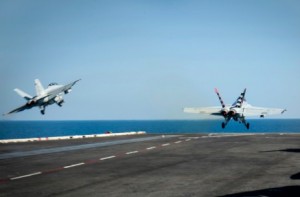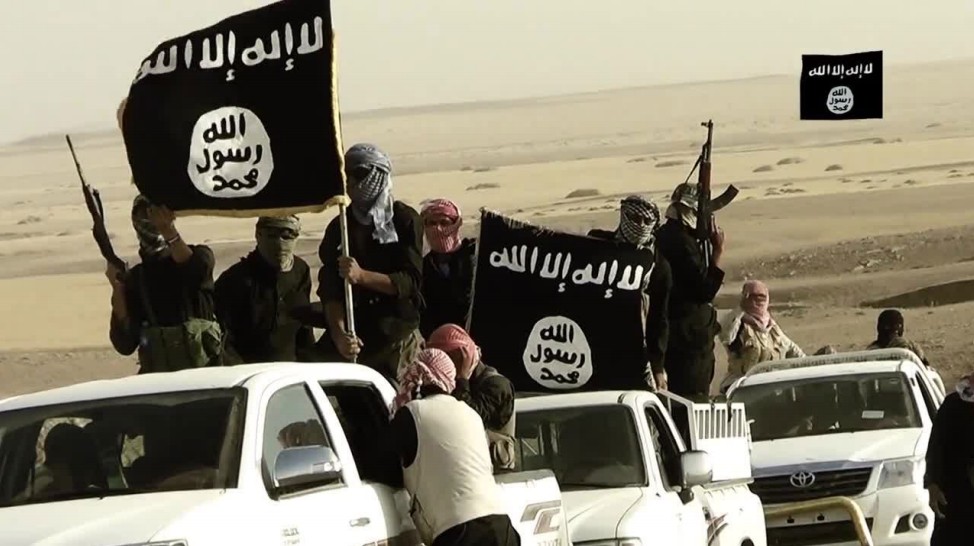The US intervention in Iraq and Syria against the Islamic State (ISIS) has been going for just under two months now. While it has in some ways slowed the progress of ISIS forces, especially in fights against Kurdish units around Kobane, they are far from routed. In fact, in the last few days, the terrorist organisation has demonstrated a stunning degree of tactical flexibility, attacking the remainder of the Iraqi government garrison in Ramadi, prompting local leaders to claim that ISIS was “24 hours away” from total control of the province.
In the face of the US airstrikes failing to stop ISIS, Obama is left in a rather awkward position, and has taken a number of decisions which belie the chaotic decision making process within the White House. Firstly, on Tuesday this week, his Secretary of Defence, Chuck Hagel, was reportedly forced to resign following the poor response to the emergence of ISIS. Secondly, the announcement yesterday that the US Air Force was redeploying a squadron of A10 ‘Warthog’ close air support aircraft to Iraq in order to fight ISIS, and assist the Iraqi Security
Forces (ISF) in a last ditch defence of Anbar province. Together these decisions show an administration struggle to keep up with developments on the ground.
Obama’s Dilemma
The problems which the Obama Administration faces in this new engagement in Iraq and Syria are rooted in the limited form of warfare which they are trying to fight. By attempting to have the best of both worlds, attacking and attempting to destroy ISIS from the air, while at the same time promising not to send significant ground forces to the region, the US response is strategically crippled.
Without ‘boots on the ground’ the US is forced to work with local proxies, and arm and train them to fight ISIS. The problem is, the US simply  has no real allies in the region. In Iraq they are working with the ISF, however the bulk of the ISF is made up of Shia-dominated militias who see the war as a religious struggle against the Sunni, and have been reported to be carrying out ethnic cleansing in areas under their control. Meanwhile in Syria, the US has made the even more dubious choice of working with “moderate” Sunni rebels. Putting aside questions on whether such rebels exist in any real number, these moderates are allied with extremists the US is actively attacking like Jabhat Al Nusra (the local AlQaeda affiliate), and as such, are of questionable allegiance.
has no real allies in the region. In Iraq they are working with the ISF, however the bulk of the ISF is made up of Shia-dominated militias who see the war as a religious struggle against the Sunni, and have been reported to be carrying out ethnic cleansing in areas under their control. Meanwhile in Syria, the US has made the even more dubious choice of working with “moderate” Sunni rebels. Putting aside questions on whether such rebels exist in any real number, these moderates are allied with extremists the US is actively attacking like Jabhat Al Nusra (the local AlQaeda affiliate), and as such, are of questionable allegiance.
A Nightmare Scenario
Unless some kind of miracle (or greater calamity) occurs, 3 to 6 months from now, the situation will likely grind into a bloody stalemate. The Assad regime will be fighting to finish off the non-ISIS rebels in Syria, while the ISF will hold their ground, and maybe make small gains against ISIS in Sunni regions of Iraq. The Kurds meanwhile will also not seek to overextend themselves and attempt to reclaim ISIS occupied region. So after billions of dollars spent and thousands killed, very little of the US’s strategic goals will be achieved.
In the face of this failure, there is a very real risk of mission creep. The current force of 23,000 US soldiers in Iraq could rapidly rise, and begin to see themselves move into a more combat-focused role. Furthermore, the tacit alliance between the US and Shia militia in Iraq could backfire, and further alienate the Sunni Arab world, leading to yet more potential recruits for ISIS’s growing army.
Stuck within the constraints of ‘limited war’, the question becomes not whether the US can defeat ISIS, but whether the they have the political will to do so. The continued existence of the Islamic State rests not on battlefield successes, but rather whether the US president is prepared to risk a more intense (and longer term) conflict with the group.
Opinoin by Michael Cruickshank
